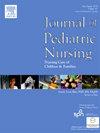基于使用布洛芬和扑热息痛的经验,对父母和照顾者管理儿童发烧的偏好进行评估:一项系统综述。
IF 2.1
4区 医学
Q2 NURSING
Journal of Pediatric Nursing-Nursing Care of Children & Families
Pub Date : 2025-01-01
DOI:10.1016/j.pedn.2024.12.018
引用次数: 0
摘要
目的:了解家长对布洛芬和扑热息痛治疗儿童发热的偏好和使用情况,以及影响其决策和做法的因素。导言:全球父母都面临着如何控制儿童发烧的问题,在确保安全的同时寻求缓解,往往依赖于扑热息痛和布洛芬等可获得的药物。纳入标准:本综述纳入了涉及0-17岁儿童发烧的父母和照顾者的定量研究。纳入了2000年1月至2024年3月期间以英语或其他语言发表的有英语版本的研究,不包括基于医院或医疗保健专业人员管理的研究。方法:采用特定的检索策略,在MEDLINE、PubMed、SCOPUS和CINAHL数据库中进行检索。在线筛选标题和摘要,并获得被认为对本综述有用的任何出版物的完整报告。方法学质量由两位审稿人使用JBI关键评估工具独立评估。使用Excel进行数据提取,使用JBI SUMARI软件进行统计meta分析。结果:大约27.4%的参与者使用布洛芬,而64.3%的参与者选择扑热息痛。亚组分析显示,29.8%和63.2%的5岁以下儿童使用布洛芬和扑热息痛。此外,20.3%的患者在这些药物之间交替使用。糖浆成为首选的给药方式,父母参与剂量的确定。影响药物选择的因素包括疗效、安全性、年龄、体重、给药难易程度和医疗保健提供者的建议。结论:布洛芬和扑热息痛在小儿发热治疗中的应用差异显著。在疗效和医疗保健提供者建议等因素的指导下,父母的参与很重要。了解这些动态对知情决策和优化儿科药物实践至关重要。对实践的启示:本综述强调加强父母对退烧药使用的教育的重要性,强调安全的剂量做法和与医疗保健提供者的明确沟通。卫生保健专业人员应消除误解并提供有针对性的指导,为儿童制定更有效和更安全的发烧管理策略。本文章由计算机程序翻译,如有差异,请以英文原文为准。
An evaluation of parents' and caregivers' preferences managing fever in children based on experiences in using ibuprofen and paracetamol: A systematic review
Objective
This review aims to investigate parents' preference for and use of Ibuprofen and Paracetamol in managing and treating children's fevers as well as the factors influencing their decision-making and practices.
Introduction
Parents globally face concern over managing children's fever, seeking relief while ensuring safety, often relying on accessible medications like Paracetamol and Ibuprofen.
Inclusion criteria
The review included quantitative studies involving parents and caregivers managing fever in children aged 0–17 years. Studies published in English or in other languages with an English language version from January 2000 to March 2024 were included, excluding hospital-based or healthcare professional-managed studies.
Methods
Searches were conducted using MEDLINE, PubMed, SCOPUS, and CINAHL databases using specific search strategies. Titles and abstracts were screened online, and full reports were obtained for any publication considered useful for this overview. Methodological quality was assessed independently by two reviewers using the JBI critical appraisal instrument. Data extraction was performed in Excel, and statistical meta-analysis was undertaken using JBI SUMARI software.
Results
Approximately 27.4 % of participants utilized Ibuprofen, while 64.3 % opted for Paracetamol. Subgroup analyses revealed that 29.8 % and 63.2 % administered Ibuprofen and Paracetamol to children under five. Additionally, 20.3 % alternated between these medications. Syrup emerged as the preferred mode of administration, with prominent parental involvement in dosage determination. Factors influencing medication choices included efficacy, safety profile, age, weight, ease of administration, and healthcare provider recommendations.
Conclusion
The prevalence of Ibuprofen and Paracetamol usage for pediatric fever management varies significantly. Parental involvement is prominent, guided by factors like efficacy and healthcare provider recommendations. Understanding these dynamics is crucial for informed decision-making and optimizing pediatric medication practices.
Implications to practice
This review highlights the importance of enhancing parental education on antipyretic use, emphasizing safe dosage practices and clear communication with healthcare providers. Healthcare professionals should address misconceptions and provide tailored guidance, fostering more effective and safer fever management strategies for children.
求助全文
通过发布文献求助,成功后即可免费获取论文全文。
去求助
来源期刊

Journal of Pediatric Nursing-Nursing Care of Children & Families
NURSING-PEDIATRICS
CiteScore
3.70
自引率
8.30%
发文量
291
审稿时长
65 days
期刊介绍:
Official Journal of the Society of Pediatric Nurses and the Pediatric Endocrinology Nursing Society (PENS)
The Journal of Pediatric Nursing: Nursing Care of Children and Families (JPN) is interested in publishing evidence-based practice, quality improvement, theory, and research papers on a variety of topics from US and international authors. JPN is the official journal of the Society of Pediatric Nurses and the Pediatric Endocrinology Nursing Society. Cecily L. Betz, PhD, RN, FAAN is the Founder and Editor in Chief.
Journal content covers the life span from birth to adolescence. Submissions should be pertinent to the nursing care needs of healthy and ill infants, children, and adolescents, addressing their biopsychosocial needs. JPN also features the following regular columns for which authors may submit brief papers: Hot Topics and Technology.
 求助内容:
求助内容: 应助结果提醒方式:
应助结果提醒方式:


